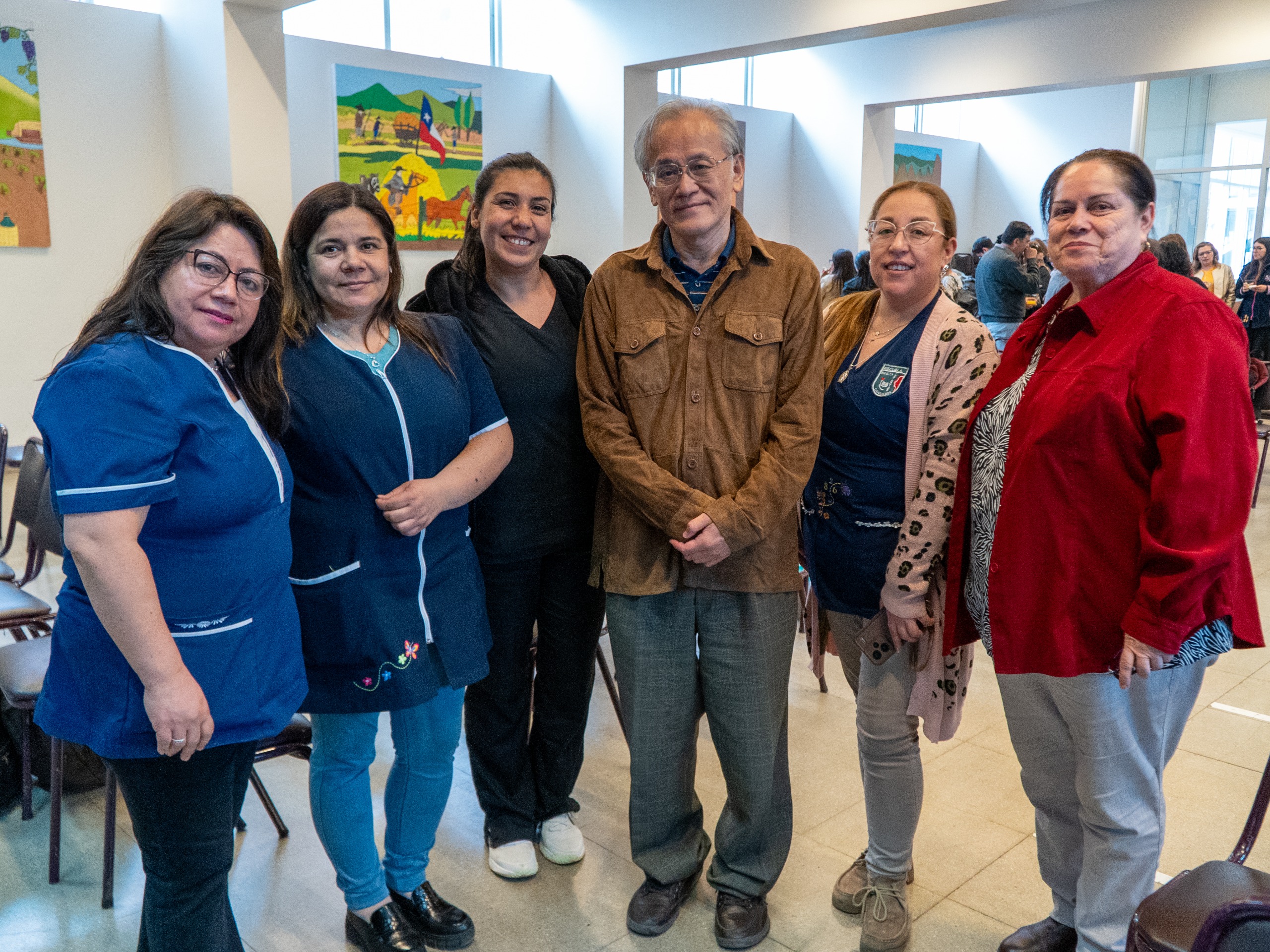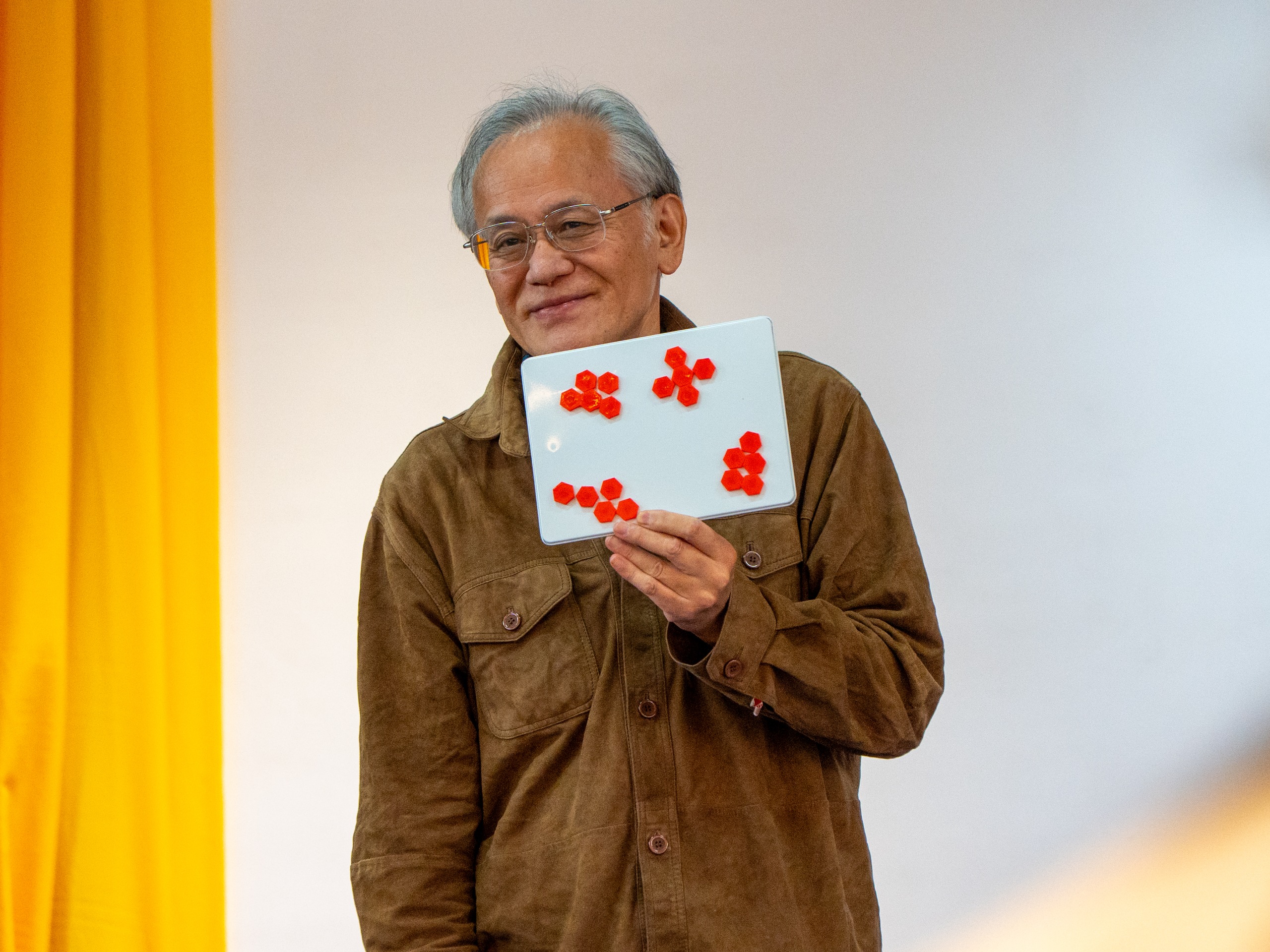
Renowned Japanese researcher Masami Isoda, an international reference in mathematics education and creator of a teaching model based on problem solving, will join the Center for Mathematical Modeling (CMM) as an international associate researcher starting in 2026. His method, which prioritizes the learning process over the final answer, has been successfully implemented in countries such as Japan, Thailand, and Indonesia. It currently informs the national program Sumo Primero, led by CMMEdu and the Ministry of Education, which seeks to transform mathematics teaching in Chile.
A New Lens for Teaching Mathematics
The Ministry of Education, together with the Education Lab (CMMEdu) of the Center for Mathematical Modeling at the University of Chile, is driving a profound shift in mathematics teaching through the Sumo Primero National Plan, based on the methodology developed by Professor Masami Isoda.
The initiative aims to transform how children learn mathematics by promoting understanding, reflection, and logical thinking through real problem solving, rather than the memorization of procedures.
Sumo Primero currently benefits more than 1,350,000 students from 1st to 6th grade and around 30,000 teachers in public and subsidized schools across Chile. The program is built upon three key pillars:
-
The Sumo Primero Textbook Collection, which guides learning through coherent didactic sequences;
-
A teacher training program that strengthens pedagogical practice; and
-
The use of artificial intelligence through ChatSP, a tool that supports textbook navigation and enhances teachers’ work.
All of this is articulated through a collaboration network of 19 regional universities and Local Education Services (SLEP), coordinated by CMMEdu.
Commenting on this work, CMMEdu Director Prof. Salomé Martínez noted: “We are committed to contributing to the improvement of mathematics education nationwide, and our work with Sumo Primero moves us toward that goal. These textbooks propose a teaching approach that encourages children to think as they learn mathematics and to understand the world through it. International cooperation with Japan has been essential in advancing this cultural shift, and having Professor Isoda join our team is both an honor and an opportunity to continue strengthening a deeper and more reflective mathematics education”.
An International Leader Arrives in Chile
Dr. Masami Isoda is internationally recognized for his contributions to mathematics education. His model has reshaped curricula in several countries by emphasizing students’ reasoning processes rather than simply obtaining the correct answer.
During his stay in Chile, Professor Isoda participated in teacher training sessions, seminars, and presentations at the Ministry of Education. Those who have observed his teaching highlight his calm demeanor, expressiveness, and ability to communicate complex ideas clearly—even when speaking through an interpreter.
Sitting in a bright room at the CMM, in a carefully organized office, Prof. Isoda reflects before responding. He speaks slowly, his gentle gestures accompanying each idea. This is where the conversation begins:
From your international perspective, what are the clearest achievements observed during these first six months of the Sumo Primero Plan in Chile—in classrooms, teachers, and students?
Before Sumo Primero, teachers in Chile relied on different textbooks at each grade level, making learning progressions difficult. Educators were unable to build on students’ prior knowledge because the approaches and representations varied widely depending on the textbook used.
To develop mathematical thinking, or the habit of thinking, students must use their own knowledge and listen to others’ ideas to construct new ones. But to listen effectively, they must first understand how others perceive mathematical concepts.
The Sumo Primero textbook collection allows students to draw upon previously learned ideas and acquired skills, connecting knowledge across grade levels through a coherent sequence from 1st to 6th grade. This enables them to reason independently and engage in classroom discussion—fundamental pillars of mathematics education. If students can discuss what they’ve learned, they are thinking for themselves.
How do you assess ChatSP as a pedagogical assistant? At what stage of the lesson cycle is it adding the most value, and why?
The challenge for Chilean teachers is to use what students already know, because the Sumo Primero texts are deliberately structured to build ideas step by step.
However, expository teaching habits still prevail. The shift proposed by Sumo Primero is revolutionary: to listen to students’ ideas first and, through dialogue, construct new insights for the day’s lesson.
ChatSP supports this process by showing which previous content is connected to the current lesson, integrating this information into the teacher’s guide and offering an overview of learning progressions. This helps teachers determine when students can apply prior ideas and recognize their progress.
As teachers learn to use it, teaching becomes easier. The textbook is not difficult—it simply shifts instruction from a teacher-centered model to a student-centered one. ChatSP provides the comprehensive view needed to connect, reflect, and guide lear.
Teacher Training: How do you assess the workshop-based training process? What strengths and improvements would you prioritize for the next cycle?
Teacher training has been a central component. In the workshops, there is a genuine effort to help teachers anticipate the ideas students might bring to class and recognize that if a student struggles, they can revisit earlier content.
This flexible planning, based on imagining the sequence of classroom learning, using Sumo Primero materials, integrating ChatSP, and assessing students’ ideas, places the student at the heart of pedagogical practice.
Sometimes students express ideas that seem incorrect but are actually rooted in prior learning. The teacher’s role is to identify that origin and use it as a bridge to new knowledge. This marks a profound cultural shift in mathematics teaching.
Role of CMMEdu: How do you evaluate CMMEdu’s role in designing, implementing, and providing technical–pedagogical support for Sumo Primero?
The CMM is an exceptional institution, with management and coordination capabilities I have not seen elsewhere. It brings together mathematicians, engineers, and scientists working collaboratively—something uncommon around the world.
In many universities, disciplines are siloed; by contrast, CMMEdu achieves genuine integration between mathematical research, artificial intelligence, and education. This made it possible to develop ChatSP and adapt Sumo Primero to the national curriculum.
Chile, through the CMM, is uniquely positioned to extend this model to other Latin American countries, leveraging a shared language and the scientific leadership it has already established.
Experience in Chile and Best Practices: What findings or good practices would you highlight to consolidate the national rollout?
I have visited Chile since 2004, almost every year, and each visit has been an opportunity for learning. During my April visit, we worked on planning the workshops, and on this trip I was impressed by how well they are progressing.
In particular, during the visit to Maule Costa, after protocol greetings and a brief talk with practical examples, we became observers. The training of facilitators allows teachers who lead the workshops to fully take ownership of the content.
This reflects enormous growth: they moved from planning with external support to executing activities with confidence and clarity. That professional autonomy is one of the strongest indicators of sustainable pedagogical change. It is also important to highlight that the program has expanded across more than 20 localities throughout Chile.
Looking ahead to the future of the Plan: What concrete goals would you recommend for 2025–2026, and what indicators should be monitored?
Looking forward, the goal is to continue improving the Sumo Primero textbooks and refining ChatSP to make it even more accurate and user-friendly.
It is essential to strengthen formative assessment—not as a test, but as an observation of students’ thinking: understanding what they say, what they know, and what they need to reinforce.
That is the spirit of Sumo Primero: learning to think mathematically, from what we already know toward what we can discover together.
What message would you give school leaders and teachers in Chile to sustain the pedagogical shift proposed by Sumo Primero over time?
My message is simple yet profound: trust your students’ ideas. Every thought, even those that seem mistaken, contains the seed of new learning.
The teacher’s role is to accompany that process with respect, patience, and curiosity. When students feel their ideas are heard, they dare to think for themselves.
This is the true purpose of Sumo Primero and the essence of a living mathematics education: learning to think together.
Written by Cintia Beltrán, CMM Communications
Interpreter: Kitsu Nilo, CMMEdu
Photographs: Alejandra Fuenzalida and CMMEdu
Posted on Nov 10, 2025 in News




 Noticias en español
Noticias en español



